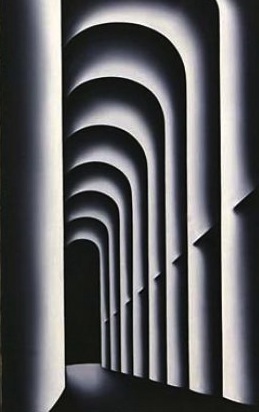News

Ullens’ Centre Opening, Beijing: Report for Collectors, November 2007
PREVIEW TO THE OPENING OF THE GUY & MYRIAM ULLENS’ CONTEMPORARY CHINESE ART CENTRE, BEIJING
November 3rd 2007
Picture this: foreign dignitaries, diplomats and directors of the most established art institutions in the world and some of the now most iconic art figures in China – all assembled under three fifteen metre scrolls from Xu Bing’s ‘A Book from the Sky’.
To say that the atmosphere was buzzying would be an understatement. This was a spectacle interweaving so many stories it could have been taken from the Qing Emperor’s Kangxi or Qianlong’s pictorial handscrolls that ran into the tens of metres. At the centre of it all, a Belgian Baron and his wife; the setting, a pristine Bauhaus-style space in an ammunition factory turned arts district, during the Cold War known only by its code number, “798”.
Like the scrolls that recorded the journeys of the Qing Emperors’ in surveying their kingdom, the occasion of the Ullens’ Art Centre opening on a frosty November 3rd evening in Beijing amid much fanfare and captivated audiences to the biggest stars across the spectrum of Chinese and western art – from Yue Minjun, Cai Guo-Qiang and Sui Jianguo to Sir Norman Foster and Anish Kapoor – also revealed considerable journeys: of ‘arriving’ and returning. It too was as much about art as making statements, and serious ones.
This arts centre with the Ullens’ impressive energy behind it is keen to place other sides to Chinese contemporary art firmly in the spotlight – sides that, to date, may not have hit the headlines with the latest auction records, but that are key to a deeper story of recent developments by Chinese artists.
Hence the inaugural exhibition mostly drawn from the Ullens’ collection of 2,000 works – a retrospective from the period 1985–1990, named the ’85 “New Wave” – to understand what is happening now in Chinese art and to foster it. To this end, when the party is over, there is a serious ongoing programme of forums and films, tours, lectures, a library and research facilities in this, one of the first privately-funded, not-for-profit independent art centres in China.
Looking at the works on display, it is fascinating to witness the stages of development as East met West once more in the wake of China’s Open-Door Policy of 1979 and these artists had their first exposure to western style and idiom, avidly experimenting with it. Many remarked on the palpable idealism and purity surounding the 1985 Wang Guangyi ‘Northern Polar Region’ series and Zhang Xiaogang, whom I enjoyed seeing beside his works dating to 1987, reflective of the palette of Paul Gauguin’s work in Tahiti and a romantic return to primitivism, summed it up perfectly:
“I am more accustomed to making art that is linked with..life and soul; I believe that intuition is superior to the exploration of concepts, that personal experience will triumph over borrowed knowledge. I believe in emphasizing feeling while admiring reason”.
This tremendous initiative of the Ullens, while offering a pragmatic base for artists, art lovers and curators, arguably goes some way to re introducing this idealism.
– Emily de Wolfe Pettit